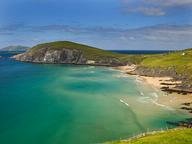Quiz Answer Key and Fun Facts
1. Although the entire Balkans, as a whole, are a peninsula of roughly all or parts of 12 countries, we'll break them down some and ask a question about a peninsula in just one individual country. Karaburun Peninsula is almost 10 miles long and varies in width from 3 - 4.5 miles. It has no population. In what country is this strange little peninsula?
2. Jutland, which takes up roughly half of Denmark, is a peninsula on its own. So, instead we'll learn about another Danish peninsula, one that's on the northwestern part of the island of Zealand. What is its rather odd name?
3. Spain, Portugal, Gibraltar, Andorra and a small part of France make up the Iberian Peninsula. We'll take on just one of those countries. In which of those areas would one find Cape St. Vincent?
4. Italy, naturally, is its own peninsula. So we'll have to find a peninsula within the peninsula to talk about. Let us try Penisola Salentina, otherwise known as Salento. Where in Italy would you find this appendage?
5. Enough of Europe. Let's go somewhere warmer. Into what body of water does the Gazelle Peninsula extend?
6. I've been reading somewhat angrily about a cape in Europe on a large island where alleged seafarers of old would turn their boats around to go back to their home. Can you guess what this cape is named?
7. There is a cape on a peninsula, and both are on an island, in Germany. What is this cape's name, please.
8. This next cape is a very important cape because if it hadn't been found the world may not have been circumnavigated when it was. Tell me the name of this pure and wonderful cape, please.
9. This cape, Prince of Wales, is the westernmost point of the mainland of the Americas. To what country does it belong?
10. This sparkling cape is in eastern Canada and was explored by the Europeans in the 1540s. What is its name?
Source: Author
habitsowner
This quiz was reviewed by FunTrivia editor
Tizzabelle before going online.
Any errors found in FunTrivia content are routinely corrected through our feedback system.
